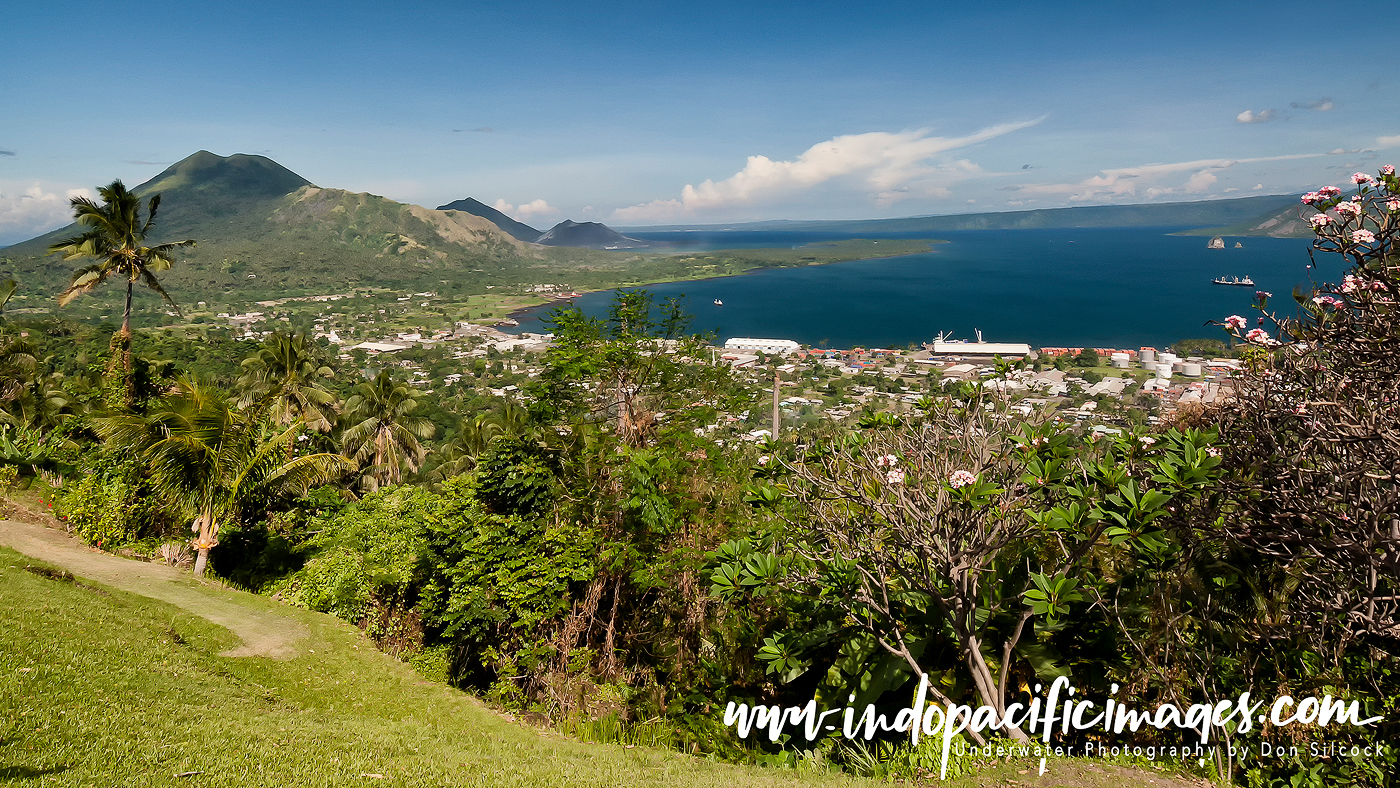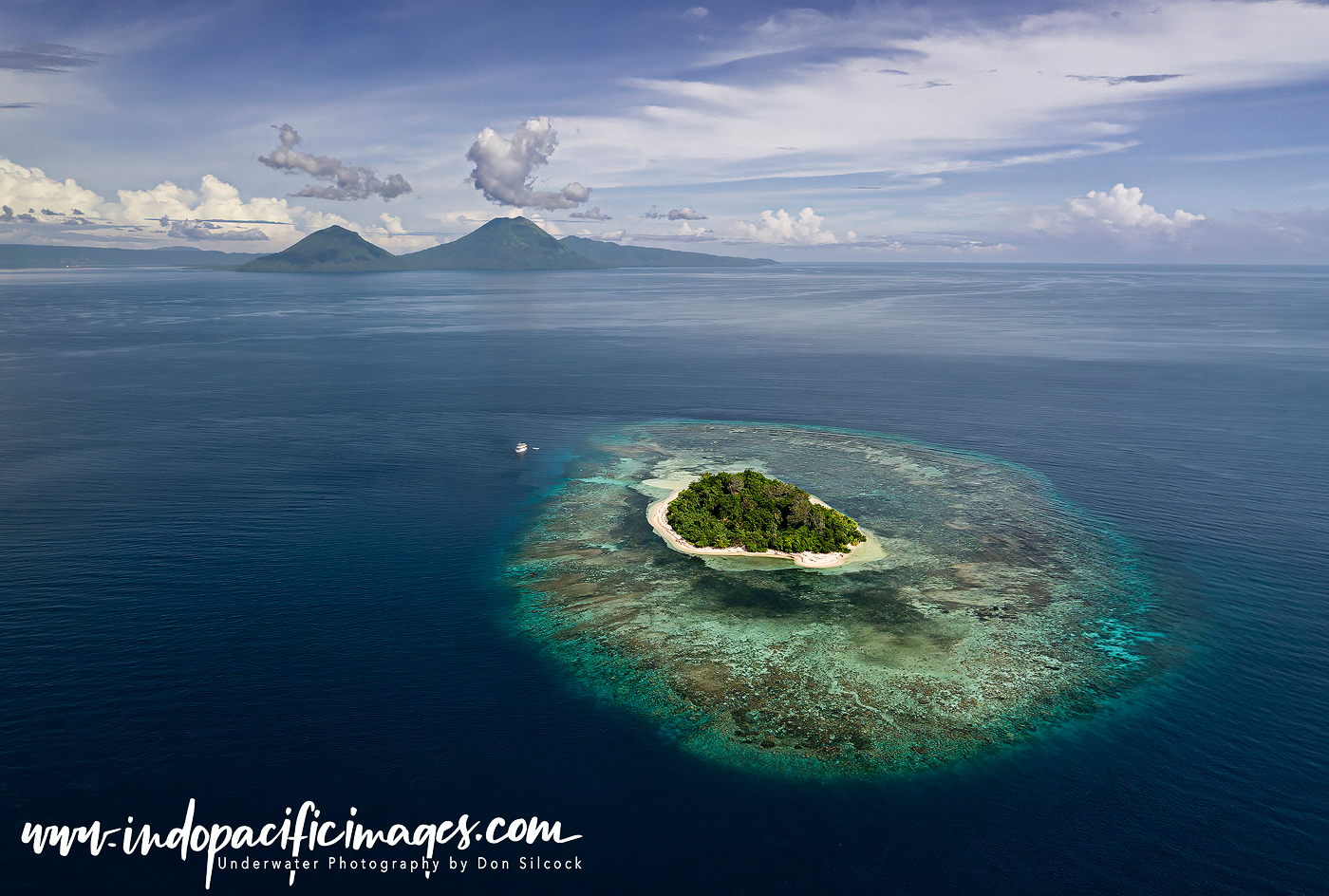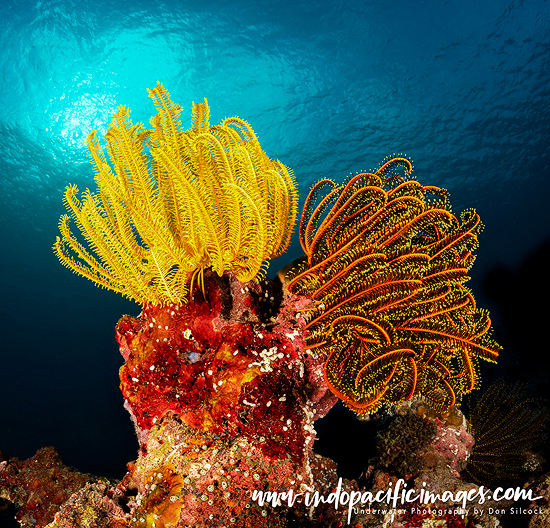Diving Rabaul Wrecks Reefs and Jetties… In January 1942, just 46 days after their devastating attack on Pearl Harbor. The Japanese Imperial Forces redirected their attention southward and launched an invasion of Papua New Guinea. Their primary objective was the capture of Rabaul on the north-east tip of the large island of New Britain.
Specifically, they wanted Rabaul’s Simpson Harbour. And its sheltered, deep-water anchorages as the base for their South Seas 4th Fleet. The first stage of taking all of PNG and then using it as their launch pad to invade Australia. And seize it they did by completely overwhelming the small Australian battalion defending the town, its RAAF airfield, and the flying boat anchorage in Simpson Harbour.
The Japanese then set about, in brutal and ruthless fashion – using captured prisoners of war as slave labour – rapidly transforming Rabaul into what would be their main base in the country. At its peak there were some 100,000 military personnel stationed in Rabaul. With up to 100 naval vessels, including aircraft carriers and battleships, using those deep-water anchorages.

Diving Rabaul Wrecks Reefs and Jetties – The Wrecks…
When the tide of war changed in 1944 Rabaul came under sustained attack by Allied bombers. Usually from 10am to midday with occasional raids at night to keep the Japanese ‘on their toes’… It is estimated that 65 Japanese ships were sunk in Simpson Harbour. And in the 1980’s and early 90’s Rabaul became known as PNG’s version of Truk Lagoon or Bikini Atoll!
But all that ended on the 19th of September, 1994…
Volcanoes…

If there is one thing you really need to know about Rabaul, it’s that it sits on the notorious Pacific Ring of Fire. And Simpson Harbour, known locally as Karavia Bay, is the caldera formed by a massive volcanic eruption some 2700 years ago.
Arrayed around its rim are four large volcanoes. Together with numerous sub-vents of the caldera. And on that fateful September day two of those volcanoes, Tavurvur and Vulcan, erupted violently and almost simultaneously.
The heavy ashfall from those twin eruptions devastated the airport. And covered much of the town under a thick layer of ash. With most of the buildings in the southeastern half of Rabaul collapsing under the weight of the ash.
Despite only 19 hours warning of the eruptions, the town and most nearby villages had been evacuated. Significantly reducing the potential casualties to “just” five deaths.
Less fortunate though were those wonderful shipwrecks… With most of them disappearing underneath under a thick layer of ash.
Rabaul or Kokopo?
My first visit to Rabaul, just three years after the eruptions, was a truly surreal experience. Imagine, if you will, a heavy storm dumping over 1.5 meters of snow on a small town. With no snowplows or means to remove it. Then envision that scene, but instead of white snow, it’s pitch black!
As we made our way through the worst-affected areas of town and the airport, the tops of buildings and phone booths were all that remained visible.
Subsequent visits to Rabaul revealed a community that had been left behind. As the town of Kokopo in Blanche Bay became the regional capital. And a new airport was built in nearby Tokua. When I returned to Rabaul last year, I found that the heavily impacted southeastern half had almost completely disappeared. Replaced by flourishing native undergrowth thriving in the rich volcanic soil.
When checking in at Port Moresby for a flight to this part of New Britain. The destination may be listed as Rabaul, but you’re heading to Kokopo.
Diving Rabaul Wrecks Reefs and Jetties
The diving in the Rabaul area can be categorized into two distinct “flavors”. And, for the sake of brevity, let’s call them inner and outer… With the inner dives in the caldera and nearby Blanche Bay. While the outer dives start at Pigeon Island on the approach into Blanche Bay. The Duke of York islands in the Saint Georges Channel and the north coast of the Gazelle Peninsula.
Between them those dives offer an excellent mix of WWII wrecks. Dynamic channels swept by the rich currents of the Bismarck Sea and black sand critter diving!

Diving Rabaul Wrecks Reefs and Jetties – Inner Diving
While almost all of the Japanese WWII shipwrecks are deep in the caldera, submerged under a thick blanket of ash. There are a few that are still accessible… With two well within recreational diving limits, while two others are much deeper.
The Hakkai Maru is a large, 130m long, support ship which lays in 25-30m of water and now supports a beautiful combination of rich coral growth and excellent fish life. While the smaller Manko Maru sits upright in 25m near the main wharf. And although the visibility in that area is not great, the wreck is still a good dive with much to see!
The Yamayuri Maru is another 130m long support ship. Which was sunk on the same day as the Hakkai Maru and, together with the Italy Maru are reputed to be impressive dives. But their depth means they are in tech diver territory…
Malapau Zero Wreck
Located on the southwest shore of Blanche Bay, just off the beach at the village of Malapau near Kokopo, is a Japanese Navy A6M2 Model 21 Mitsubishi Zero. Probably the most famous Japanese WWII fighter. The Malapau Zero is believed to have been assigned to an unknown Kōkūtai (Air Group) at one of the Naby’s Rabaul area airfields.

The plane sits upright in about 30m on a sloping sandy bottom and was first discovered in the early 1970’s. Bullet holes in the starboard side indicate that the plane was shot down. And it appears to have hit the water tail first, as the rear fuselage is damaged on the starboard side. Legend in the local villages is that the pilot survived, swam ashore and later returned to duty. But the exact date and circumstances are unknown.
The Zero is an interesting dive as the plane is intact and still has its propellers and machine guns. But the canopy is missing and the open cockpit is now home to numerous bait fish!
Johnnies Jetty
 If you like muck and critters, then Johnnies Jetty is very much the place to head for…
If you like muck and critters, then Johnnies Jetty is very much the place to head for…
Located behind one of the main supermarkets in Kokopo, the jetty was apparently built by the owner to moor his boat. Ostentatious perhaps, but sure he did us divers a big favour!
With a depth of just 5m underneath the main structure you can spend hours exploring the jetty and surrounding area.
The steel H beam pylons that support the jetty are home to lots of critters. Including a wonderful array of colourful frogfish that lay in wait for their next meal in the shelter those sections provide.
In the dark sand underneath the jetty you can find stonefish, scorpion fish, pipefish, seahorses cockatoo wasp fish and much, much more.
In the areas surrounding the jetty are large patches of sea grass that home to a variety of sea horses.
While in the open areas there are many garden eels, Which, with some patience and a stealthy approach, will allow you to get close enough to photograph…
Diving Rabaul Wrecks Reefs and Jetties – Outer Diving
The outer area of Rabaul offers an eclectic mix of diving that leans towards wrecks. But is balanced nicely by some interesting channels around Pigeon Island. The common denominator for all the sites being the rich waters of the Bismarck Sea to the north. Effectively the geographical epicenter of the renowned Coral Triangle!
Diving-wise though it all starts with the Atun wreck at Little Pigeon Island on the eastern approaches to Blanche Bay.
Atun Wreck
The exact lineage of this wreck is not clear. As some sources state it was an impounded illegal Taiwanese fishing vessel. While others claim is was a coastal freighter. Two things are clear though… The vessel owes its current location to the Rabaul Dive Club which prepped it, before scuttling it some 41 years ago. And… it’s a great dive!
The wreck sits on its keel on a ledge in 21m near Little Pigeon Island. And is very much whole and intact, with its mast still in place. The Atun often experiences excellent visibility and makes for a superb wide-angle photography dive!

Pigeon Island Channels
The formal name for the larger of these two islands is Palakuvur. But everybody calls it Big Pigeon Island and, not unsurprisingly, the smaller one is called Little Pigeon Island…
Both are surrounded by classic tropical fringing reefs and then drop-offs down into the deep. But between the two pigeon siblings is an excellent channel. Where those rich waters from the Bismarck Sea have done what they do best. And nourished arrays of sea fans and sponge gardens which offer a wonderful alternative to the Atun wreck.

George’s Wreck
Located near the tip of the Gazelle Peninsula, at the northern end of the Saint Georges Channel, is what many consider to be the best remaining WWII shipwreck in Rabaul. Despite what its name suggests, the wreck did not get its title from its final resting place. But from the person who found it in 1971… George Tyers, an Australian hard-hat diver based in Rabaul.
It is believed the wreck is probably the Japanese minesweeper Toyo Maru. That was sunk either by the RAAF or a USAAF B-24 Liberator in April 1943. George’s wreck sits upright on a steep slope, just off the beach. With its bow in 12m and the stern down in about 60m. Those rich current flows have done a superb job of transforming the ship into a wonderful artificial reef that is suitable for all levels of divers!
Others…
Also near the tip of the Gazelle Peninsula is the wreck of a Japanese “Pete” biplane that is largely intact and sits in 30m of water just off the beach. While out at the Duke of York Islands are two Japanese 15-ton 97 CHI-HA tanks in shallow water. And on the north coast there are the three wrecks clustered together at Kulau.
Very little is known about the Kulau wrecks apart from the fact they are there. And one appears to be a trawler, the second is a barge and the third is a small coastal freighter.

Diving Rabaul Wrecks Reefs and Jetties – When to Go?

New Britain is the second biggest island in PNG after the main island of New Guinea. It is located about 5° south of the Equator, which means it largely avoids the worst monsoonal weather.
However, it is impacted by the seasonal trade winds from July through to September, which blow at some 15-25 knots from the south-east. Which means the north-east coast of New Britain around Rabaul is nicely sheltered and there are calm seas with excellent diving conditions.
In Summary…
Rabaul offers a wonderful mix of photogenic WWII wrecks, dynamic channels and critter-intensive black sand diving.
Plus, if you time it right you can experience the quite remarkable annual Mask Festival that is held at the Kokopo showgrounds in July.
Last year I managed to do two back-to-back trips on MV Oceania. Which started and ended at Walindi Plantation Resort in Kimbe Bay on the north coast of New Britain.
Oceania’s skipper Dan Johnson focuses on the Rabaul area at that time of year to take advantage of the great conditions.
Plus, he times the trips so you can start the trip in Kimbe and get off in Rabaul in time for the mask festival. Or start in Rabaul with the festival, dive the area and get off in Kimbe.
I started and ended in Kimbe, had some wonderful Rabaul diving and caught the Mask Festival too – does it get any better?

Diving Rabaul Wrecks Reefs and Jetties – Scuba Diver Article
Scuba Diver magazine recently published a five-page article of mine on Diving Rabaul.And you can use the link to download a copy of it.


